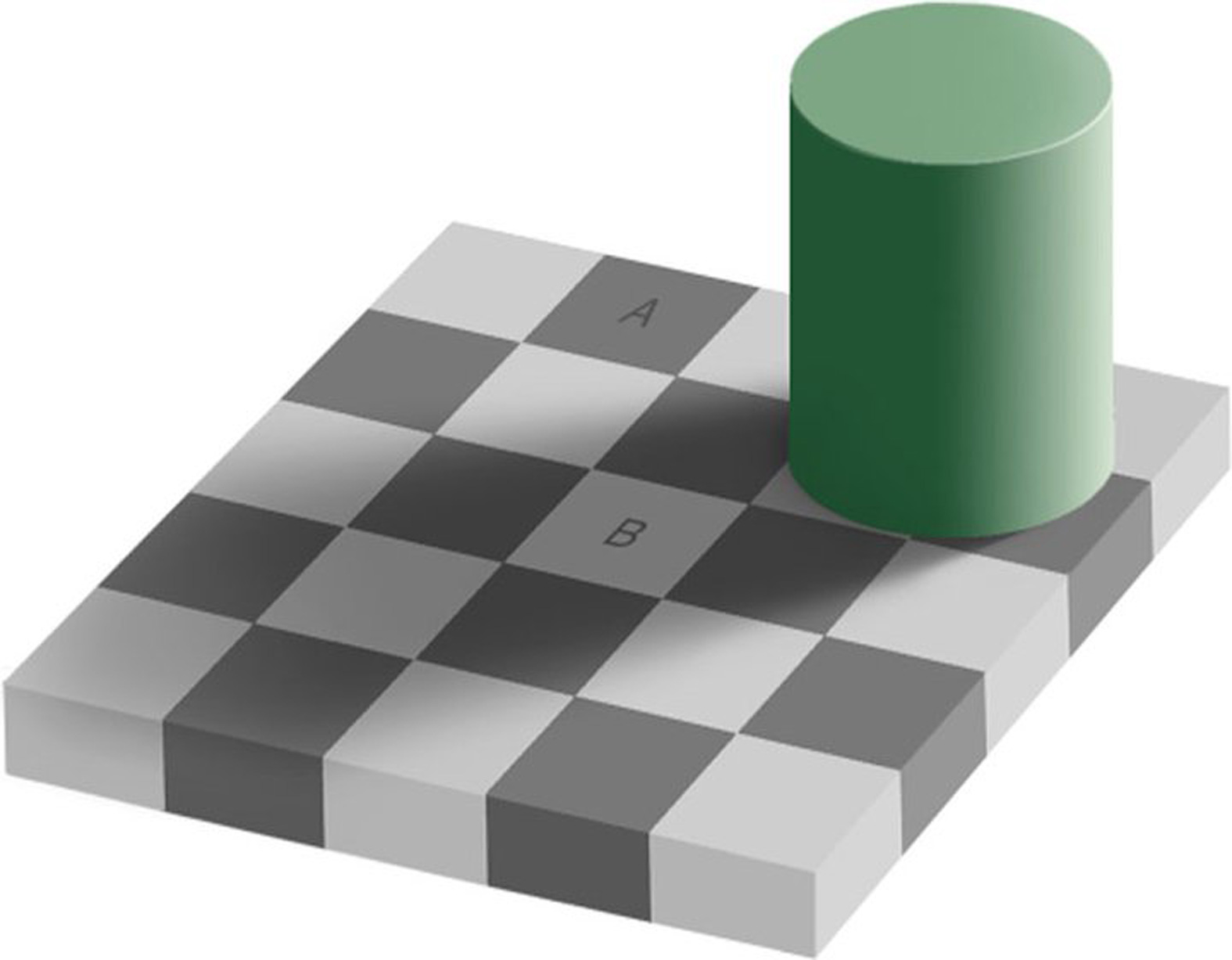I was recently asked what I meant when I wrote the following about realistic painting, “We have to unlearn how we THINK we see to learn to SEE. Our biggest battle is own conceptions vs our perceptions.”
Basic things that we learn as children, the sky is blue, the grass is green, people have two eyes, arms and legs. There are common assumptions that we live under daily to help us function and get on with the tasks at hand. However, these assumptions can also make us blind to certain details.
Court cases are a great example of how rigorous questioning and multiple points of view can put doubt upon what we think (assumed) we did or didn’t see. Stage magicians also rely upon this tendency of the human mind to misdirect attention elsewhere to perform their slight of hand. Take a look at this following example of light dark value perception.

There are two squares, marked A and B. Would you believe that they have same shad of grey? If you open this image in an editor that allows you to colour pick (sample) from both, you can then paint each colour side by side. Still not convinced? Examine the numerical values of each, and you will see that they are indeed the same. These optical illusions are in part informed by our conception of the world about us. The square in the shadow must be darker, because we reason, it is in the shadow. Such assumptions lead us to ignore what our senses really perceive. This is one of the reasons why many beginner artists struggle and often fail to achieve believable realism in their artwork.


Leave a Reply
You must be logged in to post a comment.